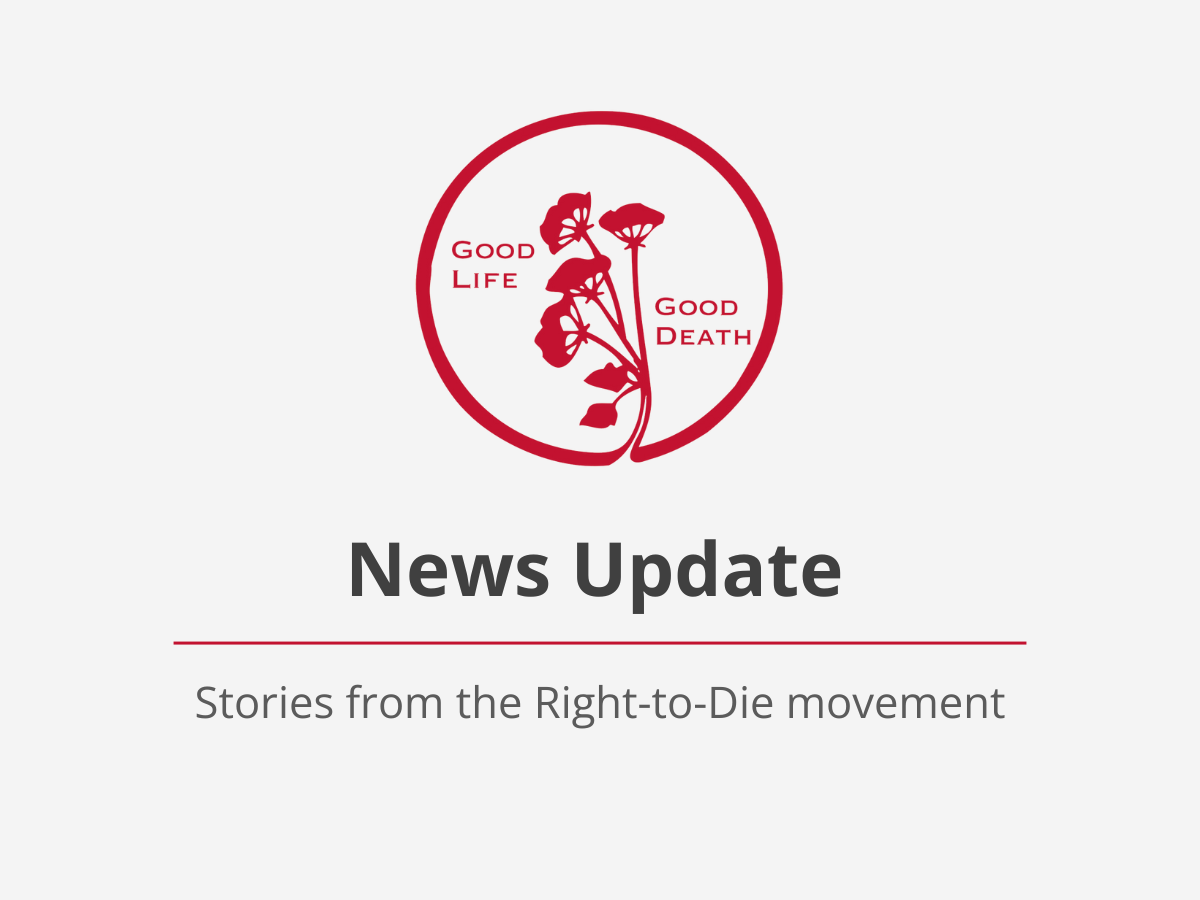Laura, an 88-year-old woman, embarks on a final journey to Switzerland to take control of…
2018 Statistics – California’s End of Life Option Act
The 2019 Annual Report is now out
For 2018
337 California individuals died from ingestion of aid-in-dying drugs, a rate of 12.6 per 10,000 deaths based on 268,4743 deaths to California residents in 2018. 23 of those received their prescriptions in 2017.
Compare with the Canadian Medical Aid in Dying system – which allows physician administered drugs: For the period January 1 to October 31, 2018 there were 2614 medically assisted deaths.
It is estimated that Canadian MAiD deaths were 1.12% of the estimated total deaths in Canada for the first 10 months of 2018.
Prescribing Physicians
In all of California, only 180 unique physicians prescribed 452 individuals aid-in-dying drugs.
Individuals Prescribed Life Ending Drugs
531 individuals started the end-of-life option process.
452 individuals had prescriptions written in 2018.
314, or 69.5 percent, were reported by their physician to have died following ingestion of aid-in-dying drugs prescribed under EOLA.
59 individuals, or 13.1 percent, died from the underlying illness.
Status of 79 prescribed individuals is unknown.
Of the remaining individuals,42, or 9.3 percent, have died, but their ingestion status is unknown because follow up information is not available yet.
Demographic characteristics
11.3 percent were under 60 years of age.
75.9 percent were 60-89 years of age.
2.8 percent were 90 years of age and older.
88.4 percent white.
88.1 percent were receiving hospice and/or palliative care
Diseases
68.8 percent were identified as having had malignant neoplasms (cancer). Lung cancer accounted for 15.1 percent, pancreatic cancer accounted for 8.6 percent, colon cancer constituted 8.2 percent, breast cancer comprised 6.9 percent, and prostate cancer constituted 6.0 percent. Other malignant neoplasms accounted for the remaining 55.2 percent.
13.1 percent were identified as having Neurological diseases.
Insurance
94.4 percent of the individuals who participated in the Act had some form of health insurance.
70.3 had Medicare or Medicare combined with another type of insurance.
2.7 percent had Medi-Cal.
.3 percent had another type of insurance such as Covered California or Veterans Affairs insurance.
54.3 percent of individuals had a physician or trained healthcare professional present at the time of ingestion of the aid-in-dying drug. In 70.5 percent of the cases, the attending physician was present.
The complete report on California End of Life Option Act statistics can be found here.
Fewer people took advantage of the California law in 2018 compared to 2017. This is likely due to opponents’ challenges to the law. Riverside County Superior Court Judge Daniel A. Ottolia to overturned the law for a brief time (Ahn v. Hestrin) in 2018. The opponents ultimately lost in the courts. The California End of Life Option Act is in effect today.

